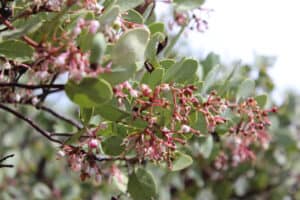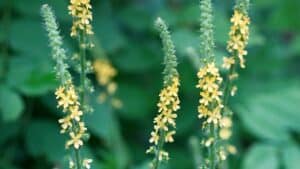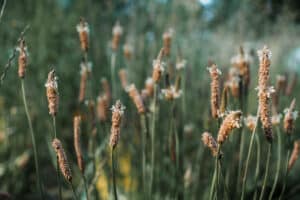As herbalists, our #1 goal in our work is to provide healing and alleviate the suffering in the people we serve.
But that typically leads into our #1 fear as herbalists, which is that we might inflict harm or hurt someone with the medicinal plants we give them.
This is a totally valid concern, for indeed there are some plants that can cause problems in some people. But for the most part, the majority of medicinal plants you are most likely to use in your practice are super safe, gentle, non-toxic plants that are tolerated by most people. The chances of you actually damaging someone’s body with herbs is actually really slim.
In general, there are a few different ways of looking at how a plant affects the body. The first is the biochemical understanding, or looking at how the plants influence certain chemical pathways in the body, and as such induce particular physiological shifts in the organ systems.
The other orientation (which is in no way contrary to the first), is looking at the energetics of plants and people, that is, how a plant will influence the ecosystem of the body on the levels of temperature (hot/cold), moisture (wet/dry), and tone (relaxed/tense). This is typically done by looking at someones constitutional pattern and how a plant will influence that on these 3 levels.
Taking this side of herbalism into consideration, we get a much more in-depth view on how a plant may potentially lead to an imbalance in someone. Note, I’m not saying harm or damage, but rather lead to a minor imbalance within their tissue state. Perhaps they get a little too heated up, or a little chillier, maybe their mucous membranes get dried out, or that burning pain in their gut gets a little worse. These are constitutional dynamics of the people and plants, and I believe it’s one of the most important ways to tell if the remedy we give will heal or “harm.” And honestly, “harm” is a strong word, these issues can be quickly and easily cleared up simply by formulating the remedies differently (to balance it out more), or by changing remedies all together.
On this topic of potentially harming someone with a medicinal plant, we have the BIG topic of herb-drug interactions. This is one particular subject that honestly freaks a lot of people out. I think a lot of folks conjure images of giving someone a tincture and after the first dosage the person looses their mind, or has a seizure or a heart attack because the herb had an adverse interaction with their medication.
So here’s the deal with herb-drug interactions. 1) Serious ones are actually really rare (it’s much more common for cross-reactions between drugs than with plants), 2) Any interactions are oftentimes synergistic, meaning the plants do a similar thing to the drug and thus potentiate its effects. This can be a problem from one perspective, but good from another, as it may enable someone to reduce the amount of drug they’re taking (after talking to their doctor first of course!!). 3) Most herbs don’t have adverse reactions with prescription or pharmaceutical drugs, yet the few that do are relatively well known at this point.
This is a really intimidating subject for a lot of herbalists, but I always say you don’t have to memorize every drug and every plant that may potentially interact with it. You just need to have some good reference materials to look this stuff up. A few good books on the subject include Herb, Nutrient, and Drug Interactions: Clinical Implications and Therapeutic Strategies by Mitchell Stargrove and Johnathan Treasure and Herbal Contraindications and Drug Interactions: Plus Herbal Adjuncts with Medicines, 4th Edition, by Francis Brinker. They’re a little pricey, but indispensable books for the practicing herbalist.
The short of it though, is that the likelihood of you actually hurting someone with a medicinal plant is pretty low. Not to mention that the only way to really learn how to give herbs that will actually help someone, is the start giving them herbs!! It’s far too common for people to think they need to know it all before they can start helping someone with what they know.
But there are essentials you need to know about people and plants, and solid skills and strategies you need to understand in order to effectively help people with plants.







